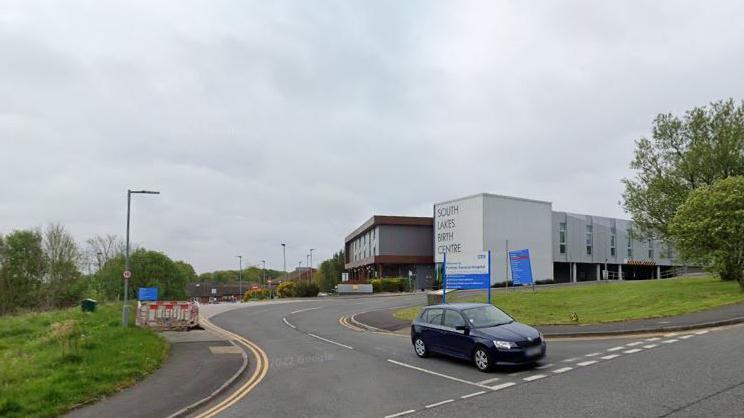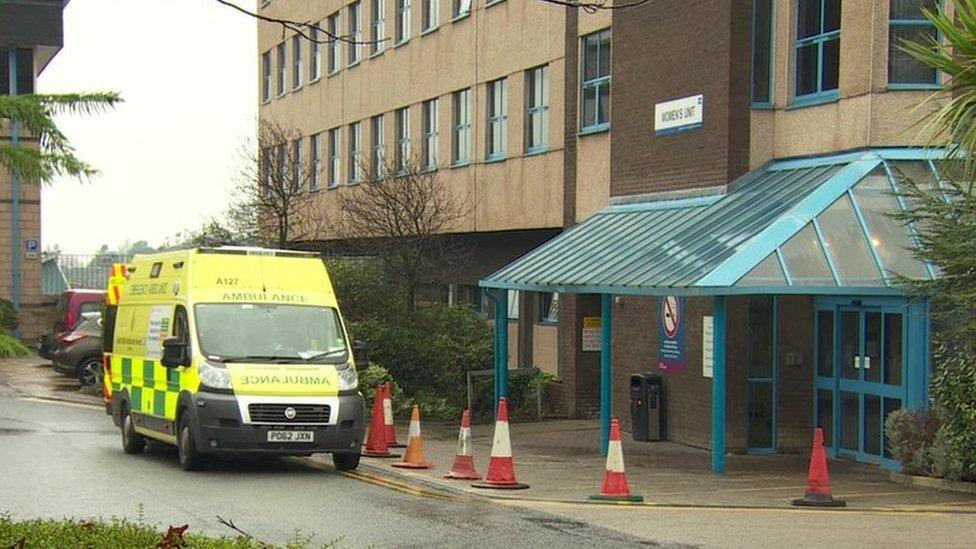Coroner raises concerns over similar hospital deaths

Both women died the day after being released from Furness General Hospital
- Published
A coroner has raised concerns after two women died in "remarkably similar" circumstances a day after leaving hospital.
Dr Nicholas Shaw, assistant coroner for Cumbria, wrote to the chief coroner about the circumstances of the women's deaths after they were seen by Furness General Hospital in Barrow.
Dr Shaw wrote in the document, also addressed to the trust's medical director: "In my opinion, action should be taken to prevent future deaths and I believe you and the wider trust have the power to take such action."
The University Hospitals Morecambe Bay Trust (UHMBT), which runs the hospital, said they had taken the comments "extremely seriously" and had already taken action.
The document was published on Tuesday after an inquest into the circumstances of Nancy Rogers's death was concluded earlier in July.
It stated Ms Rogers had been taken to A&E by ambulance on the afternoon of 18 November 2023 after collapsing outside on Storey Square, in Barrow, while walking with her sister into town.
At the hospital, her bloods were taken but results were not due back until 20 November and staff told Ms Rogers she may have fluid on her lung.
She was discharged to her home, but in the early hours of the morning she collapsed once again and stopped breathing.
Despite the family, a neighbour and then paramedics performing CPR, she died.
'No learnings'
The coroner said Ms Rogers, who was 75 at the time, had been trying to sell her home to return to the Philippines, which had caused her stress.
He concluded she had died of natural causes.
The medical cause of death was registered as bilateral haemothorax, which happens when blood collects between the chest wall and the lungs, and ruptured dissecting aortic aneurysm, which happens when the wall of the aorta tears, causing blood to leak between the layers of the arteries.
But Dr Shaw said the case was "remarkably similar" to that of another woman - Shirley Potter - who had died on 12 February 2023.
Dr Shaw said that at Ms Potter's inquest, the hospital said no learnings were needed from the circumstances of her passing, as they were not typical.
He added a Furness General clinician present at Ms Rogers's inquest said "no learning or teaching has taken place" since her death.
But Dr Shaw said action was needed.
He added: "The circumstances in both these cases are remarkably similar in that both ladies attended the emergency department at Furness General and were allowed home only to die within a day of the same cause."
The trust has 56 days to respond to Dr Shaw's prevention of future deaths report.
It must present details of action it has taken or proposes to take, as well as a timetable for changes to be implemented, or a reason why no action is proposed.
UHMBT said an investigation had already been commissioned and actions taken.
Jane McNicholas, chief medical officer at the trust, said: "The findings of the investigation have led to a number of actions, such as ensuring that senior clinicians provide oversight of patient care in our Same Day Emergency Care service and improving communication between colleagues triaging patients in our Emergency Departments (EDs), paramedics and senior ED clinicians."
She added that learnings had also been shared with "relevant colleagues" so they could be aware of the "relatively rare condition" of aortic aneurysm.
Follow BBC Cumbria on X (formerly Twitter), external, Facebook, external and Instagram, external. Send your story ideas to northeastandcumbria@bbc.co.uk.
Related topics
- Published23 August 2023

- Published12 October 2021
